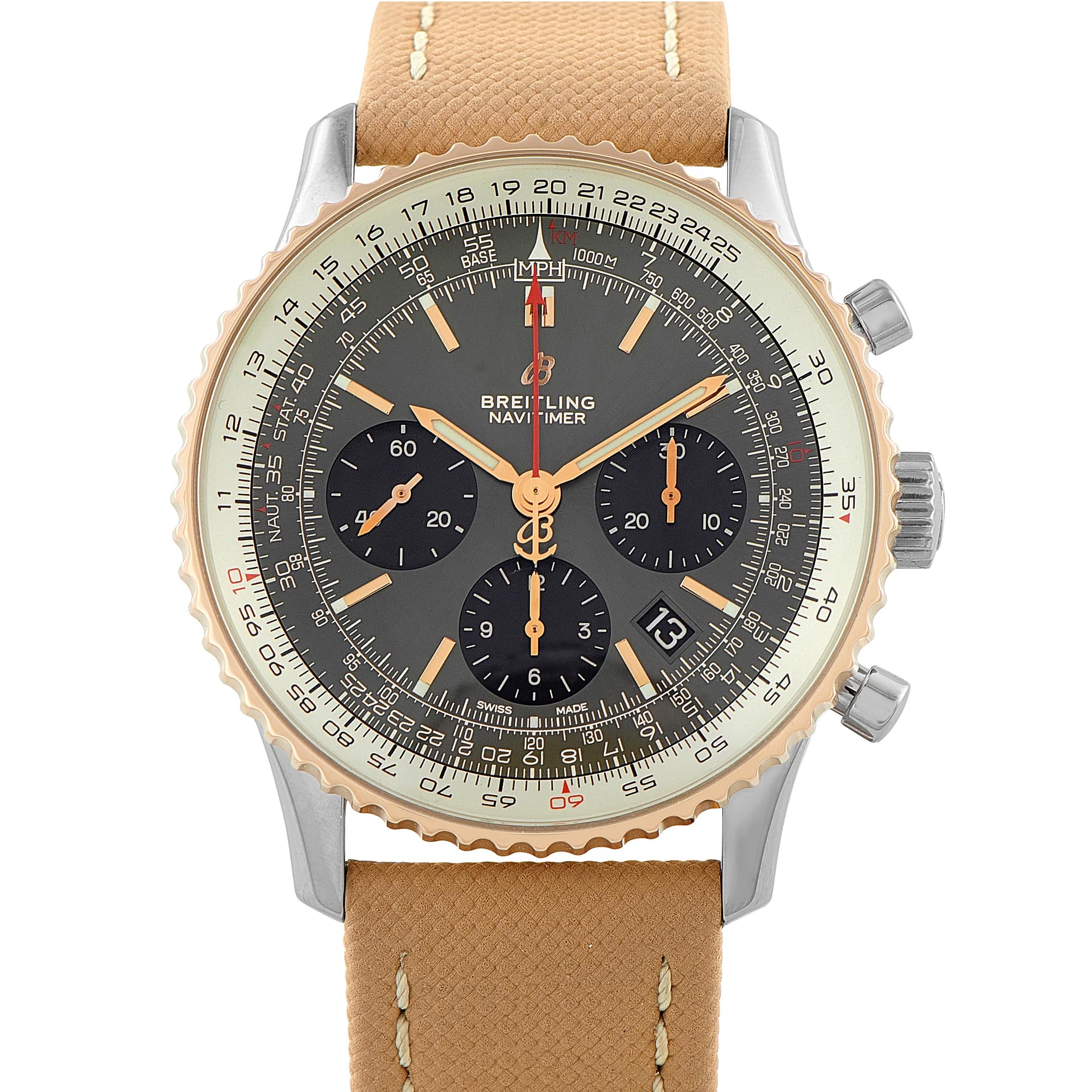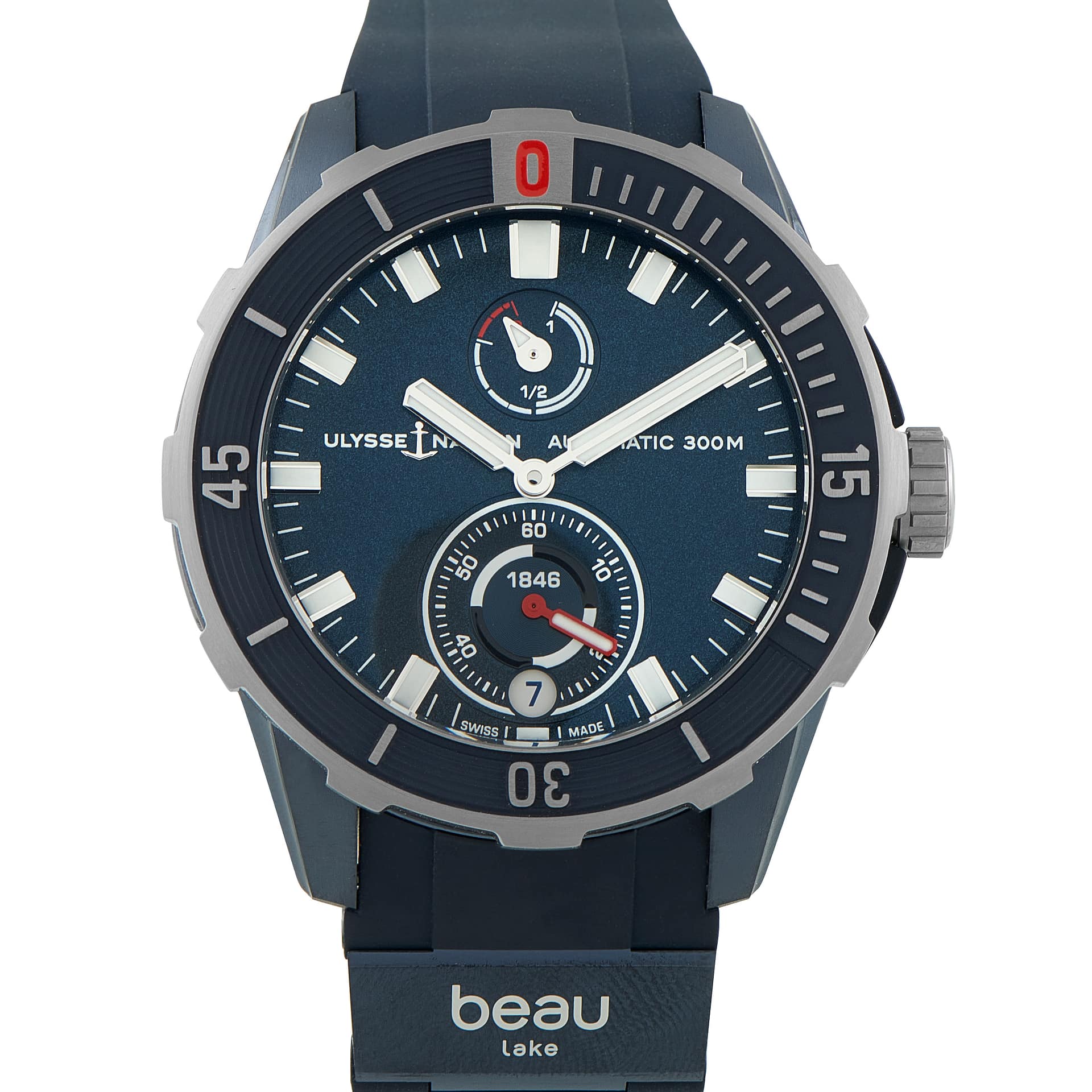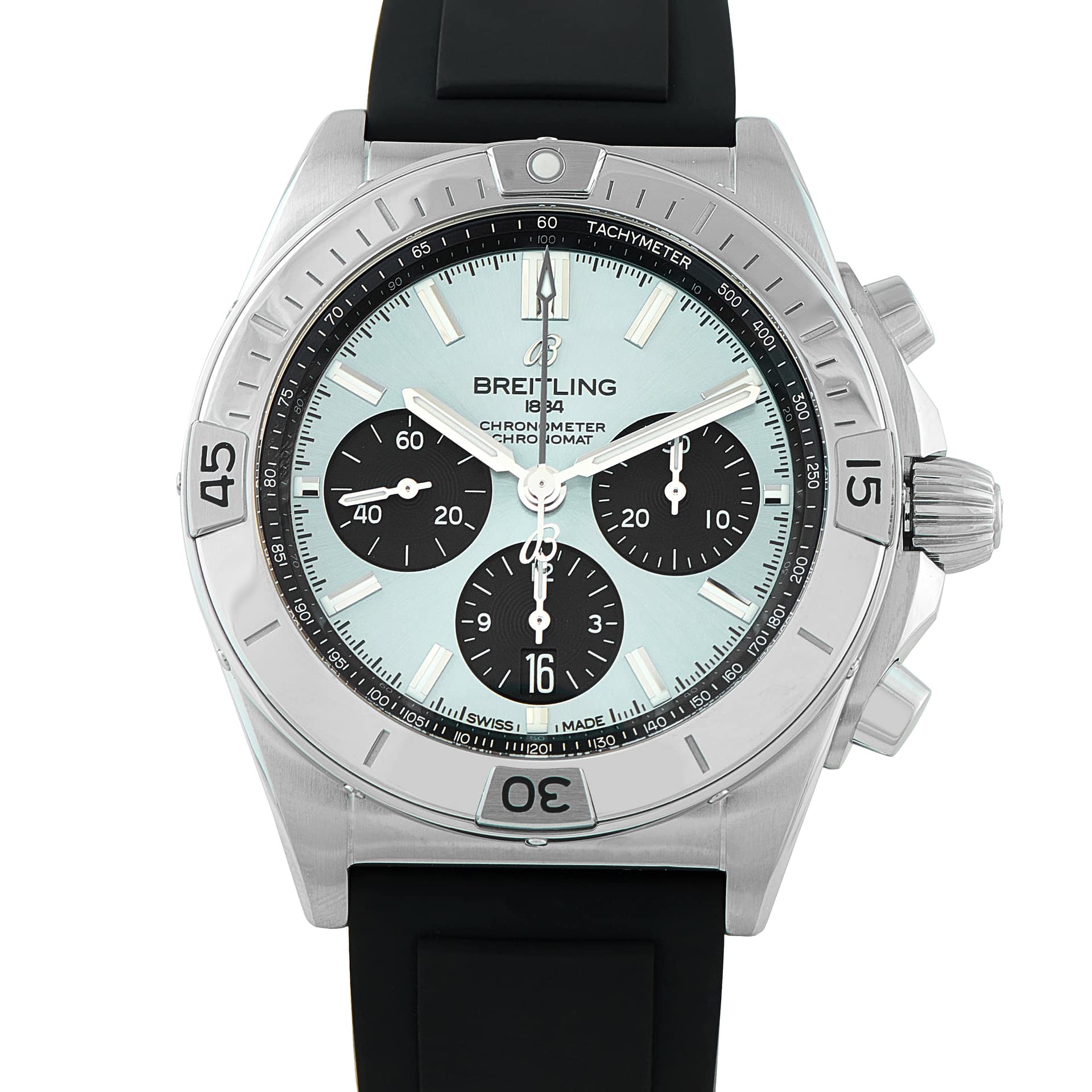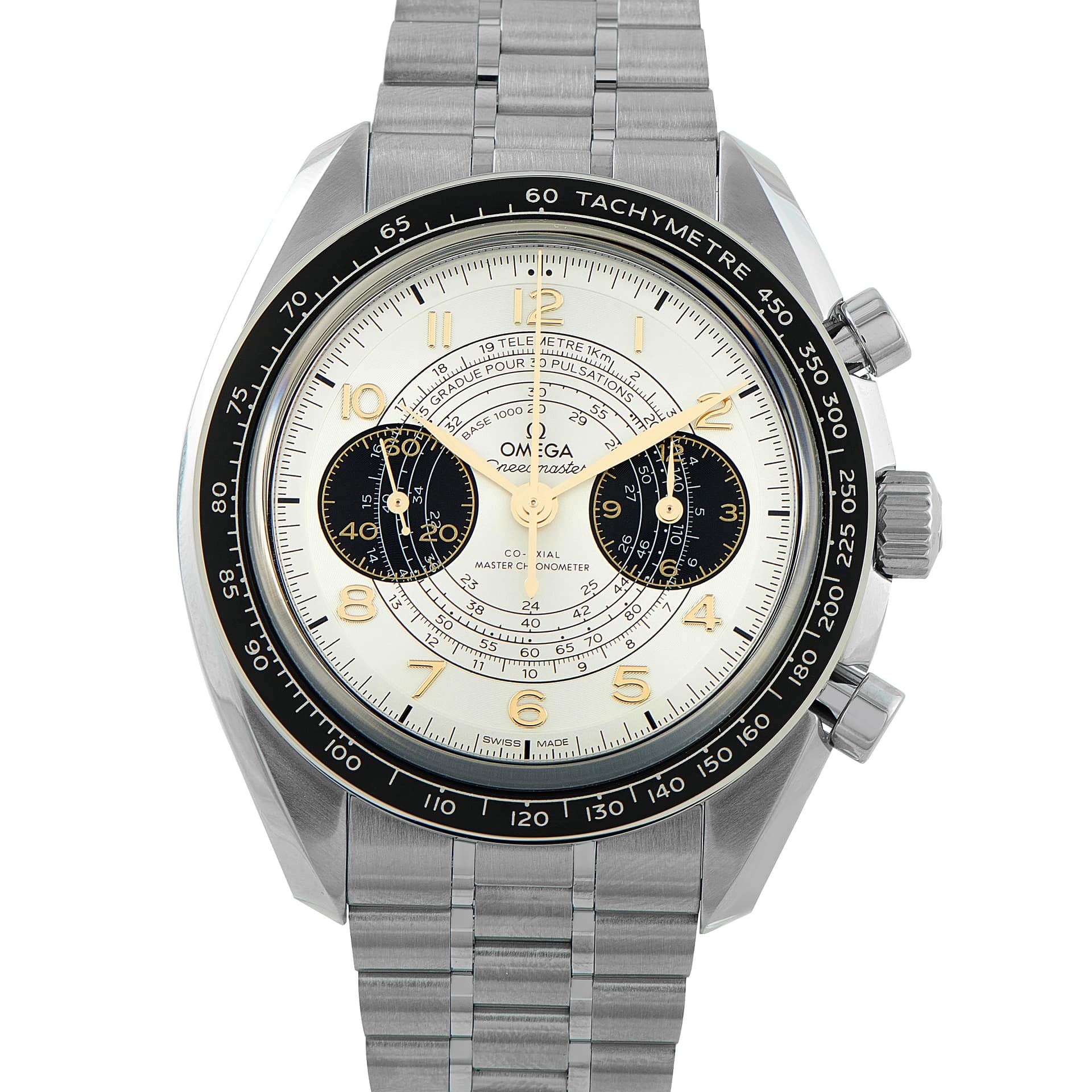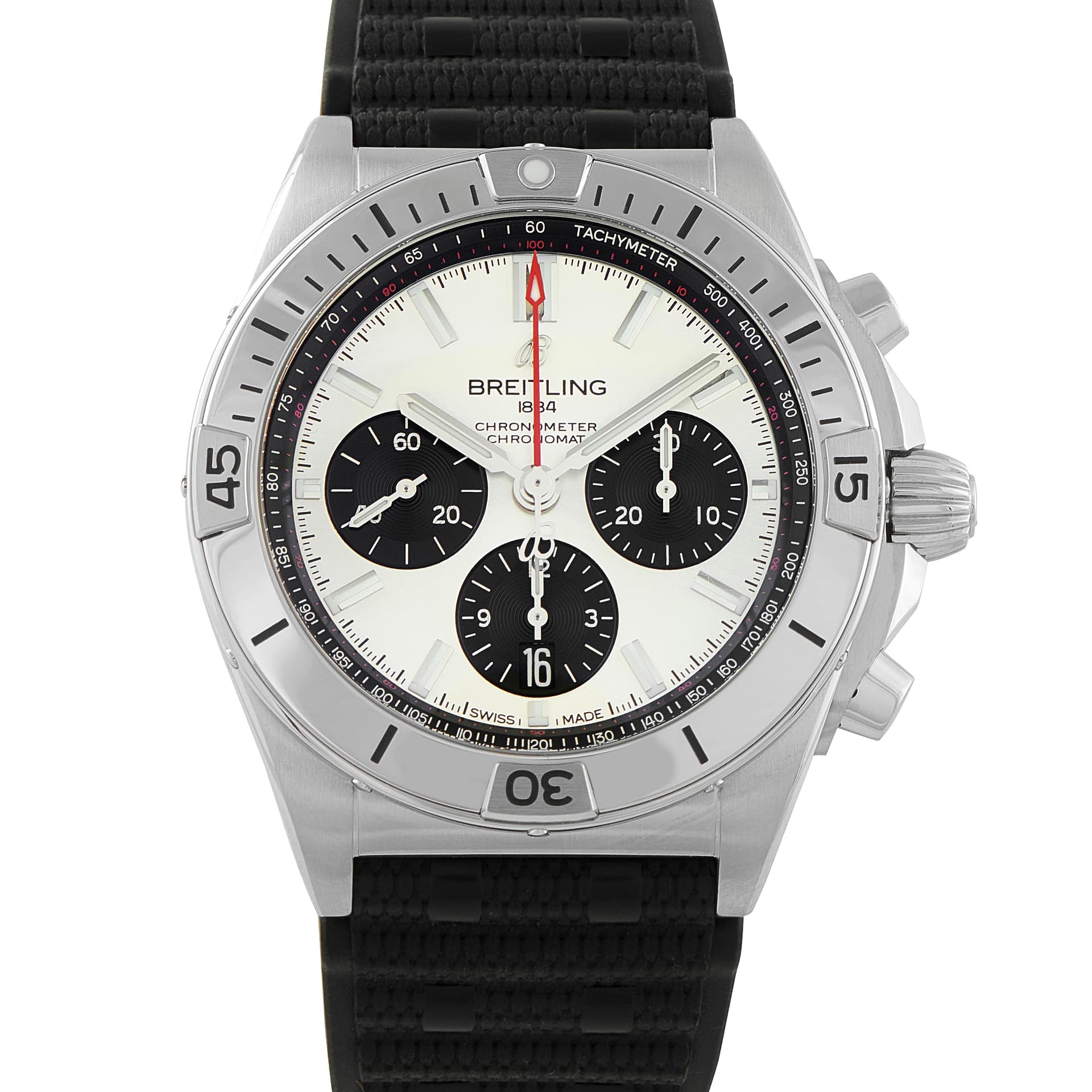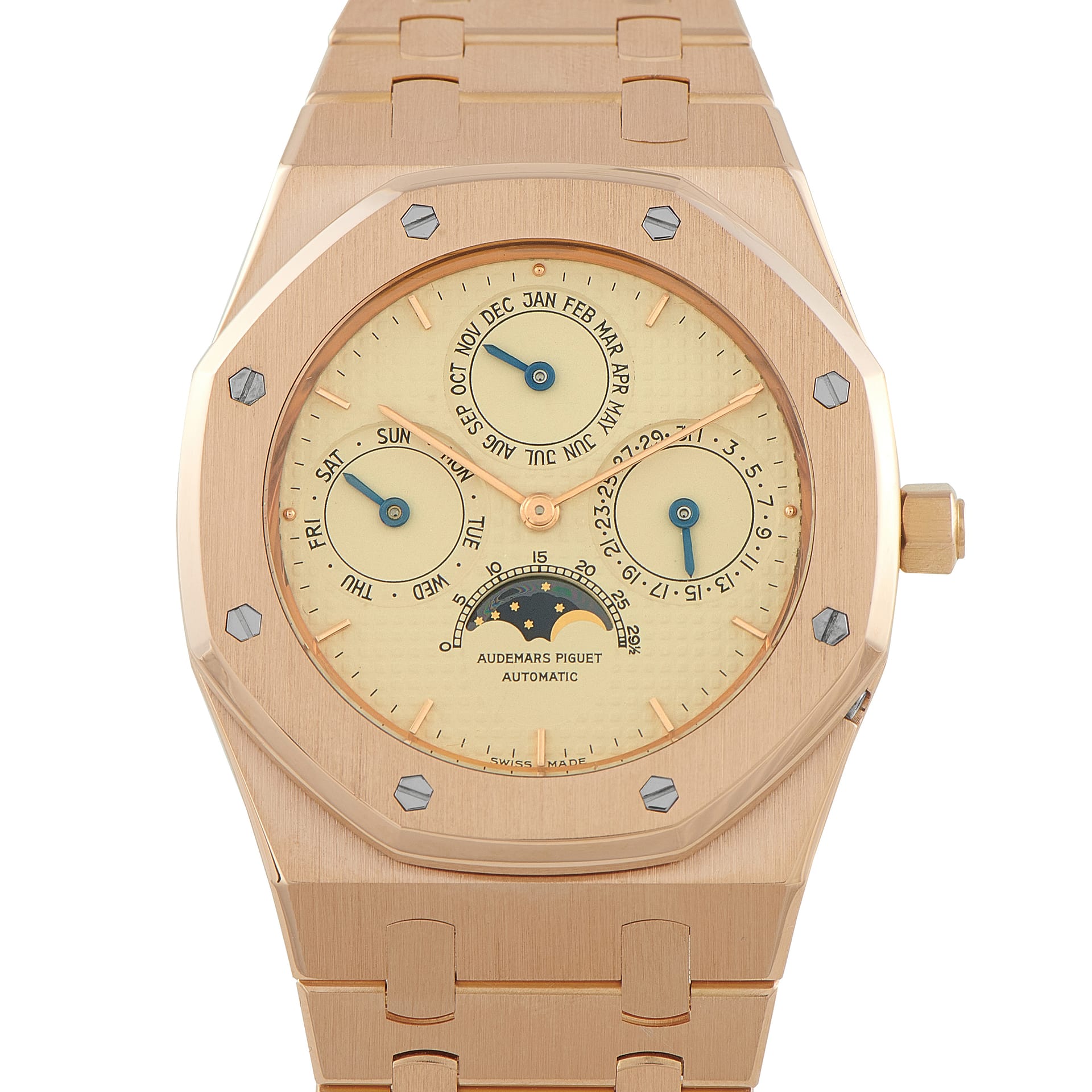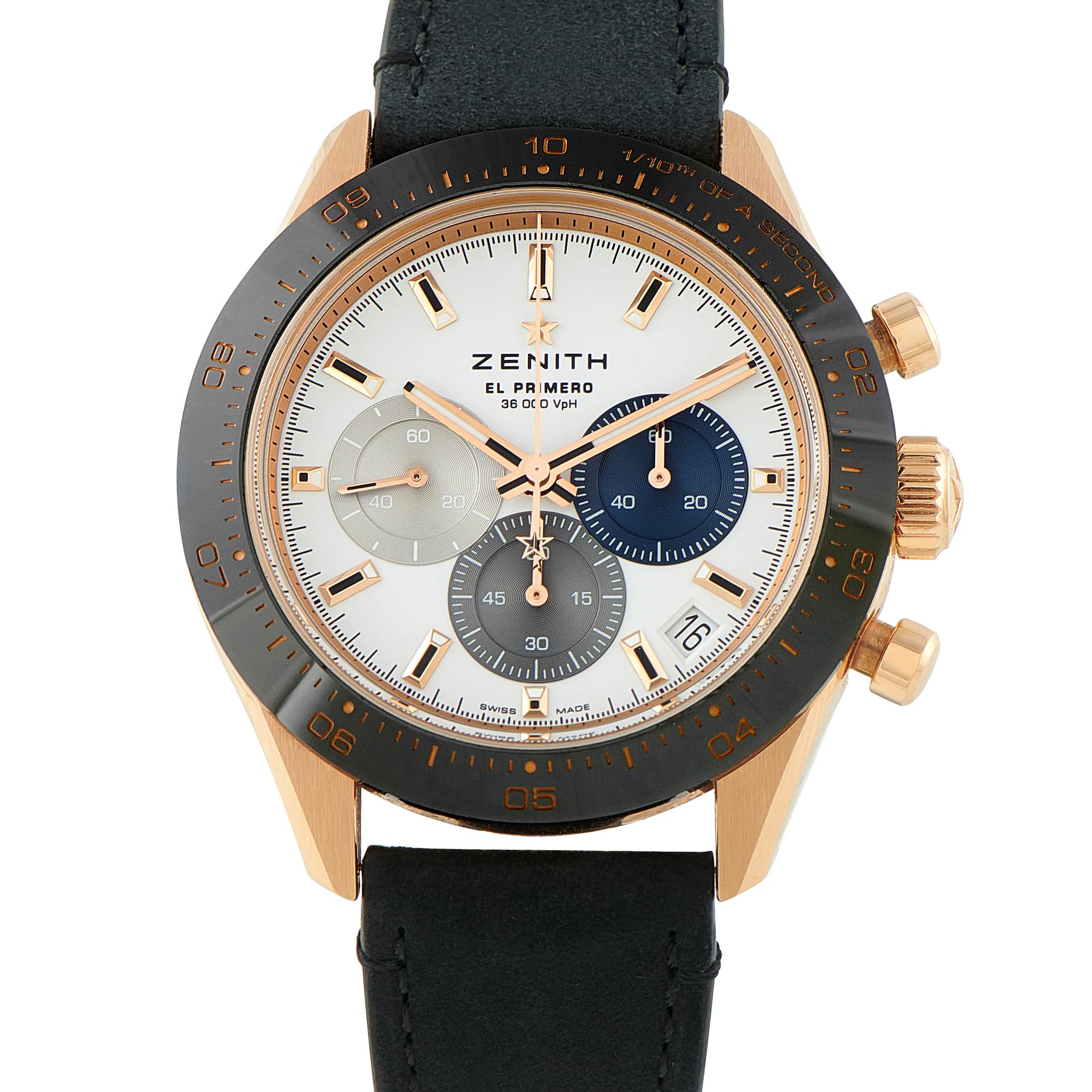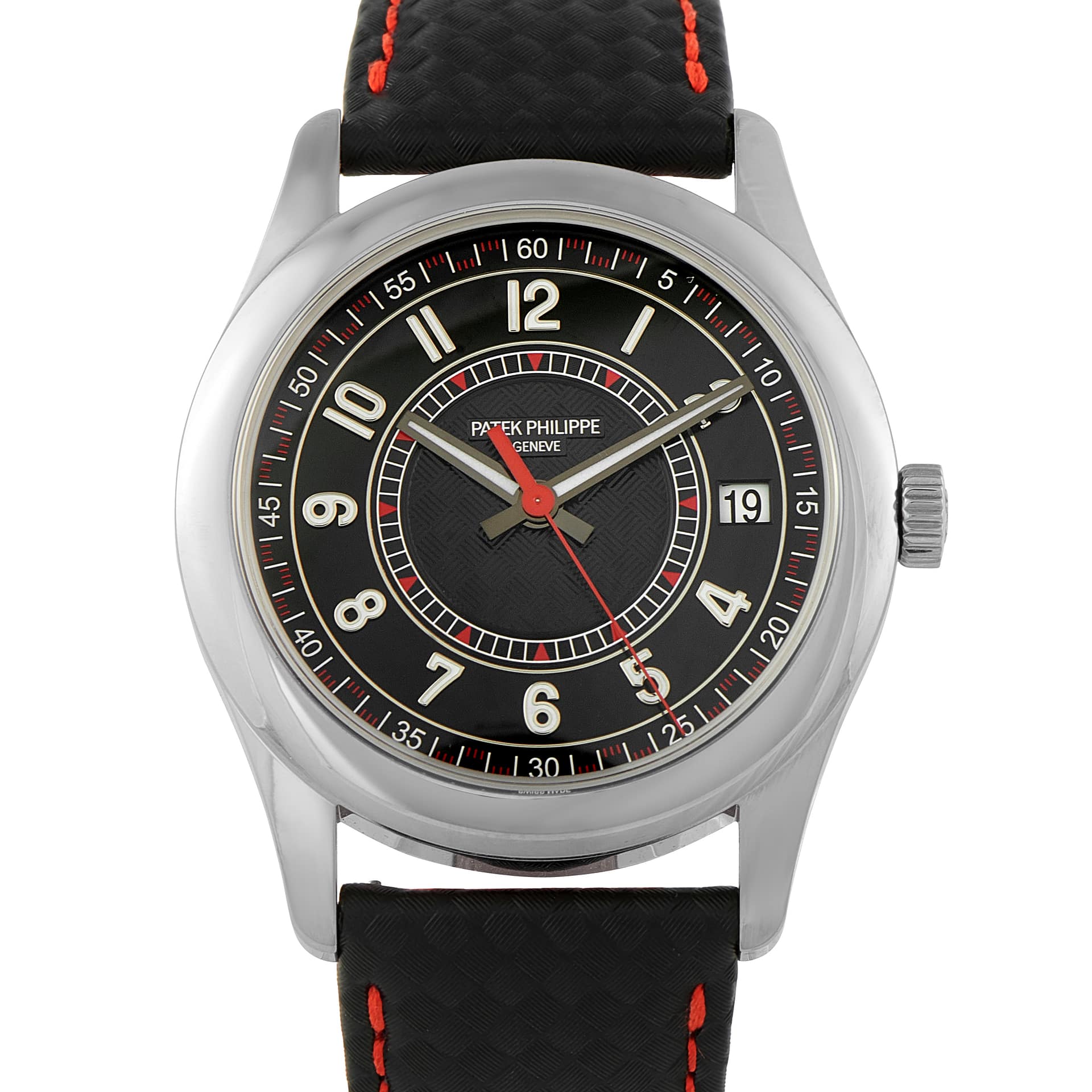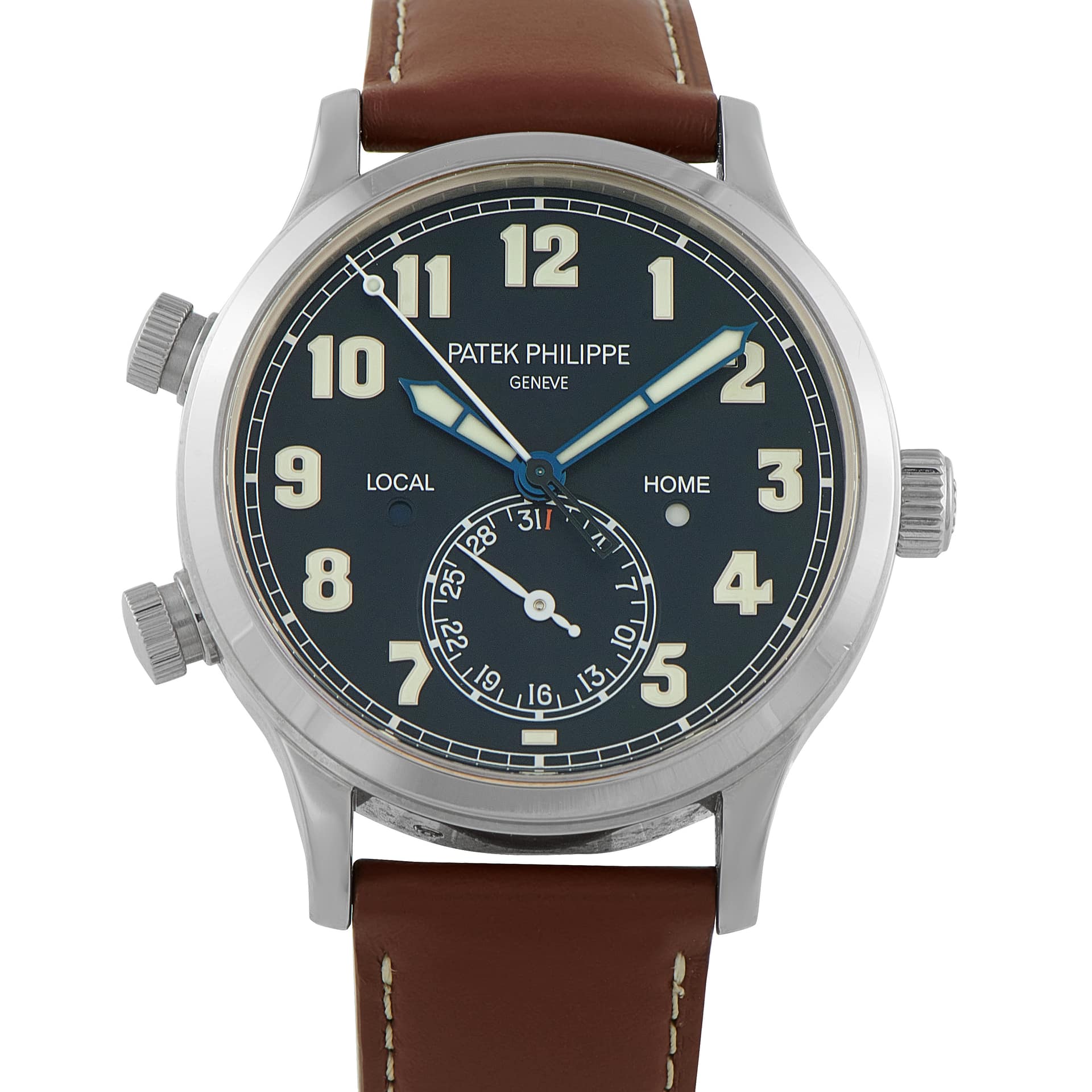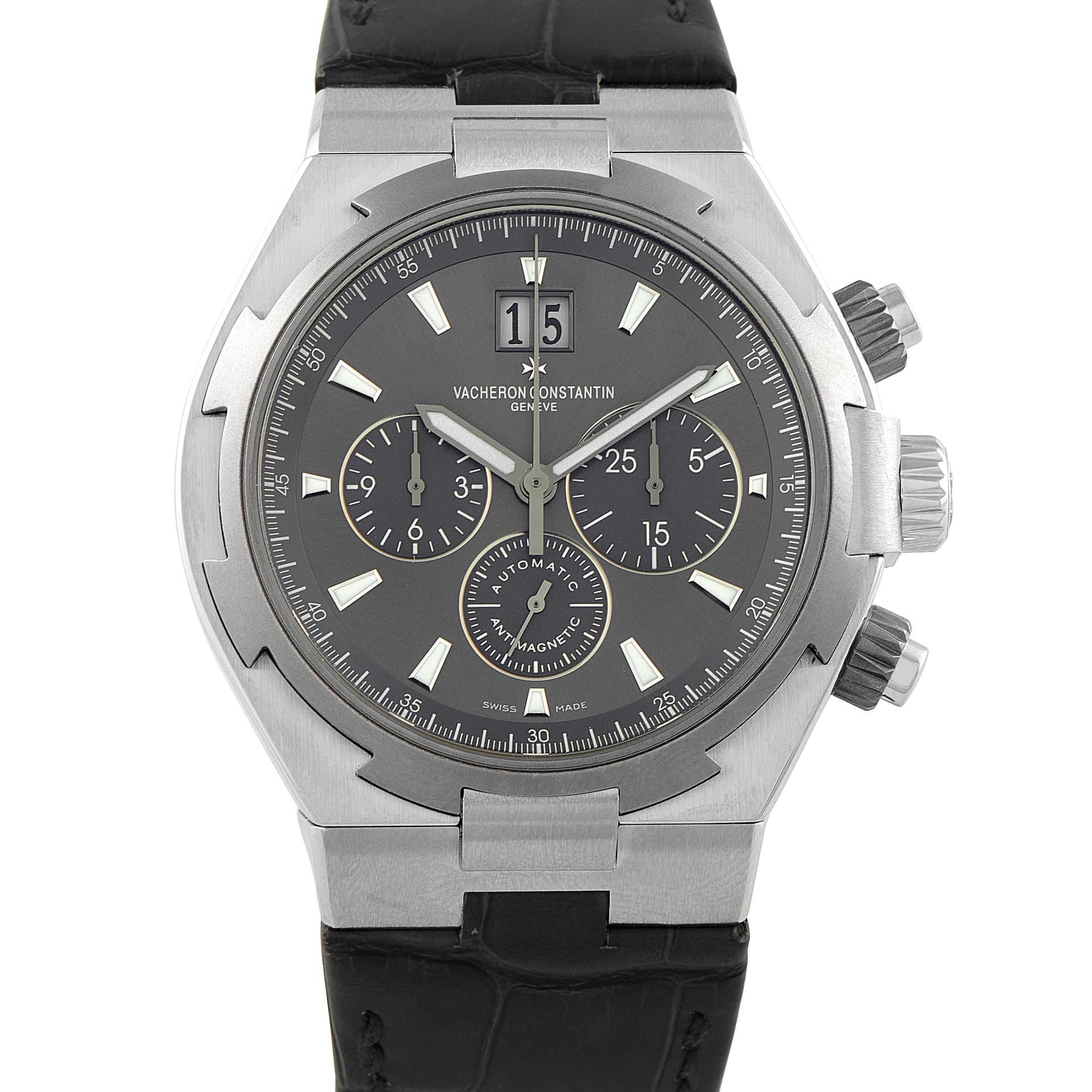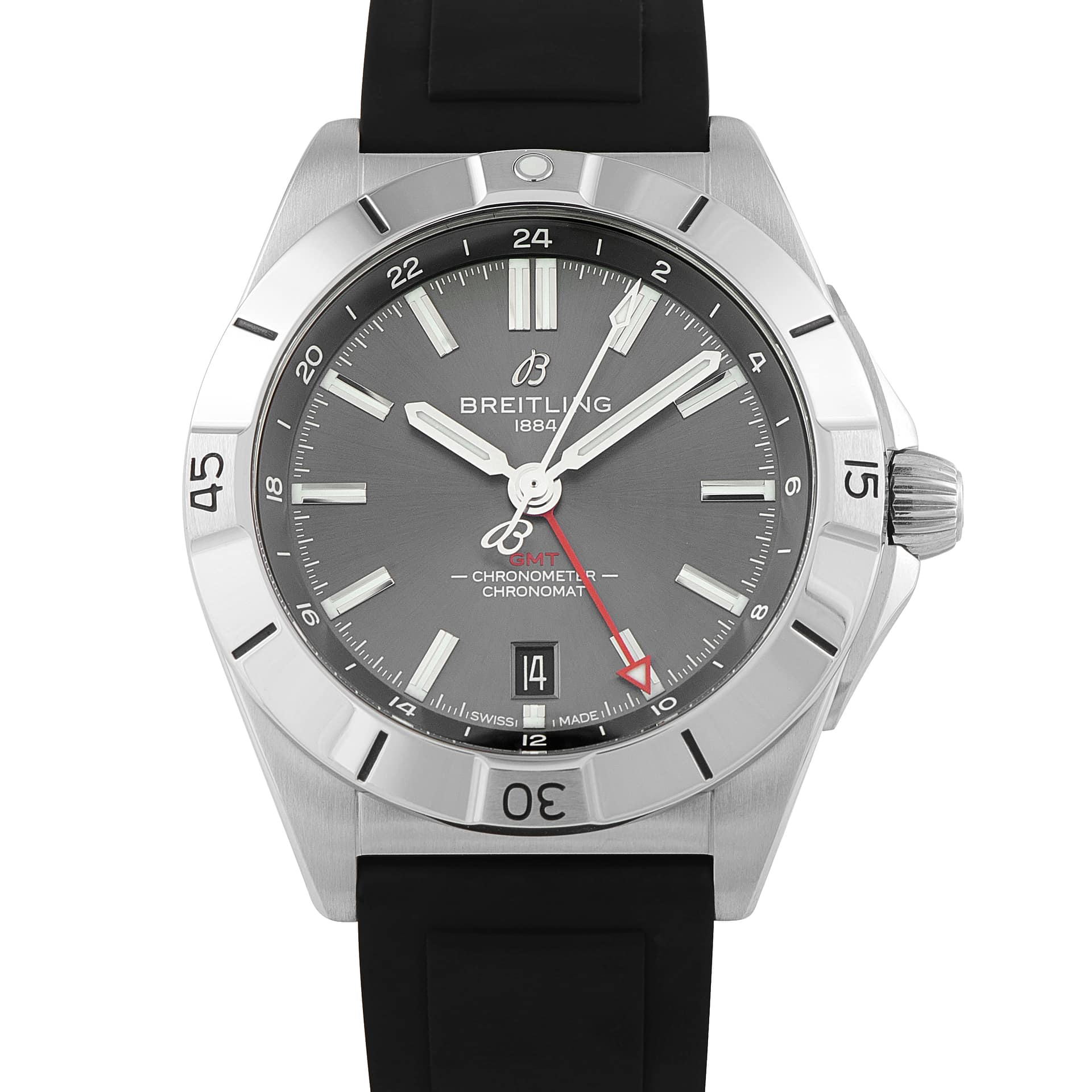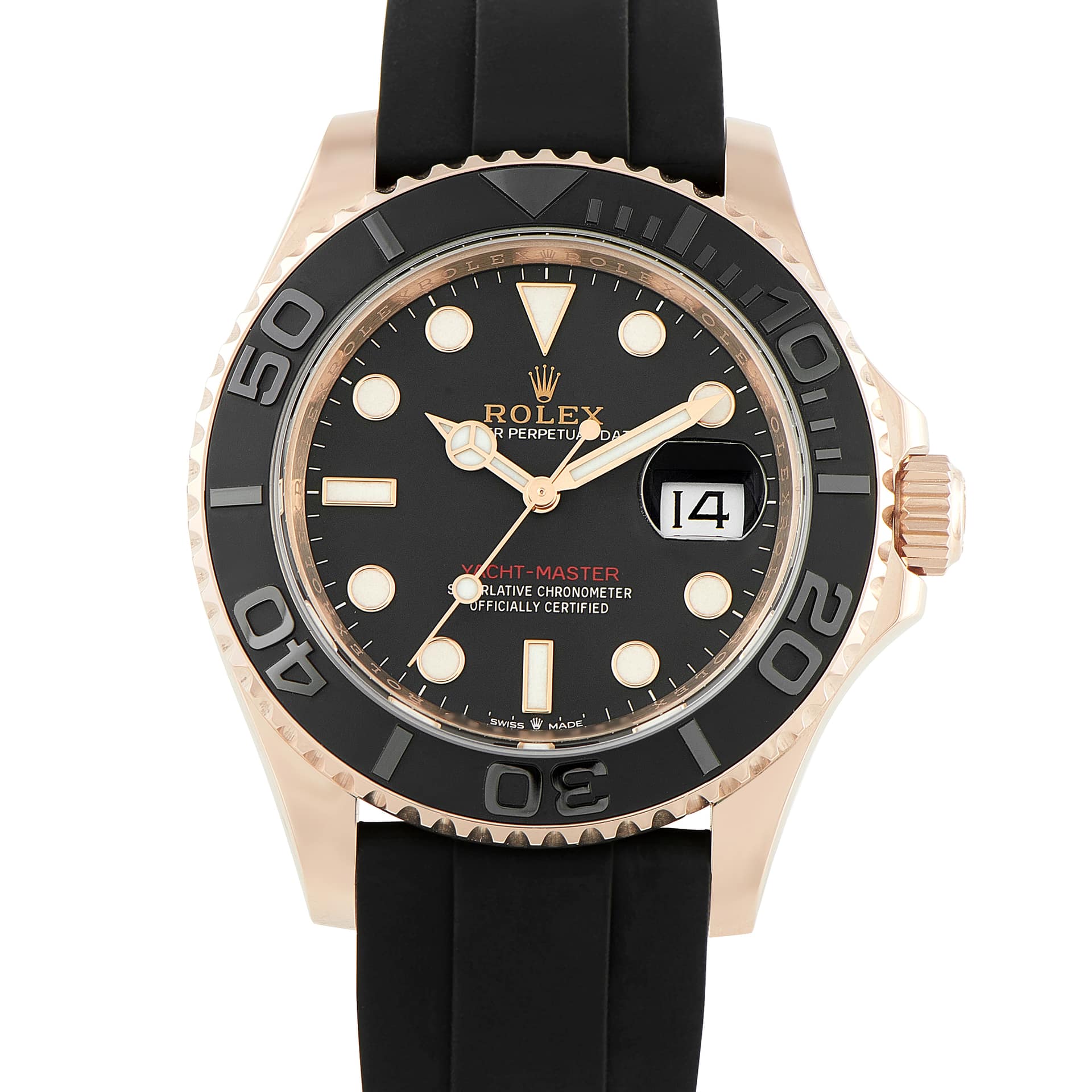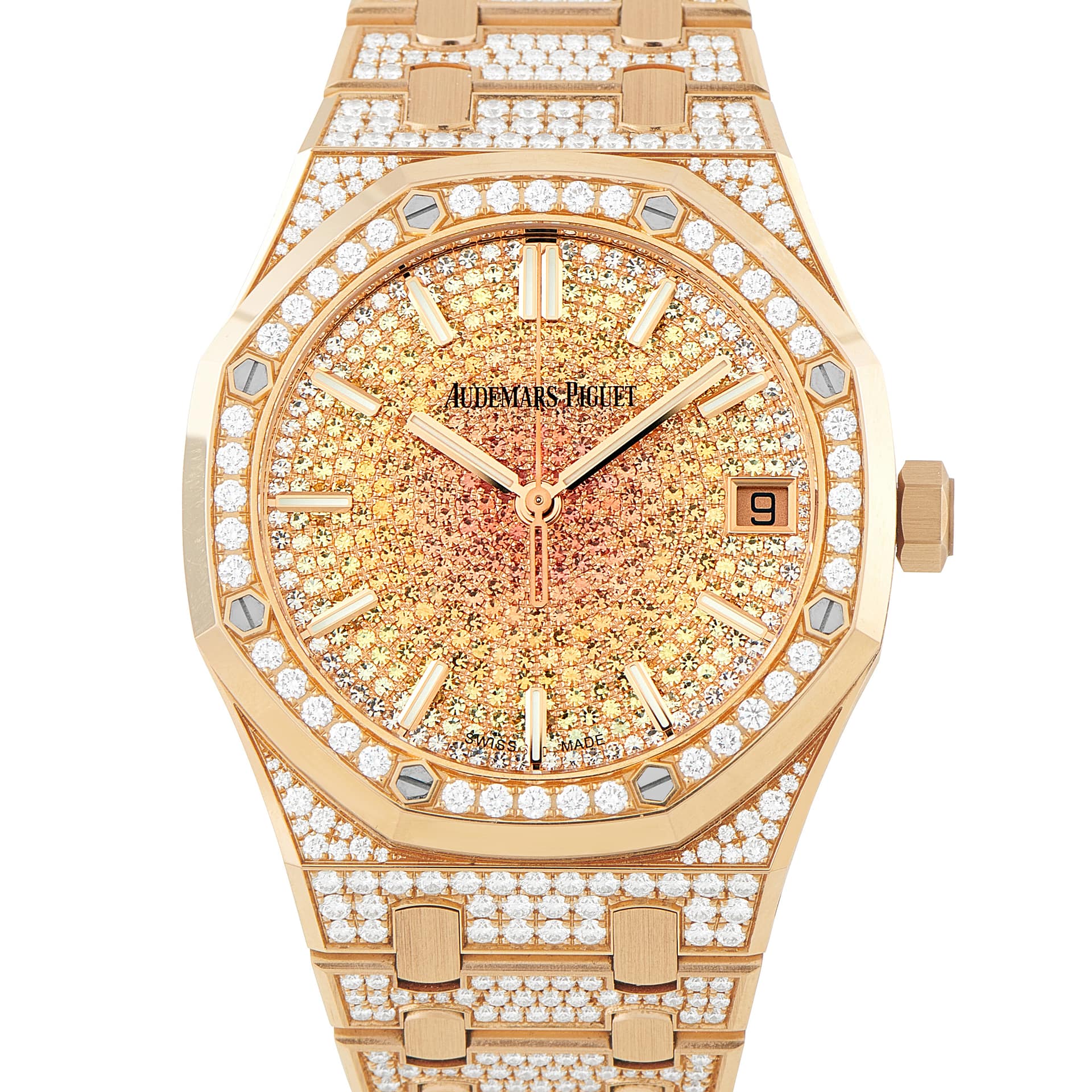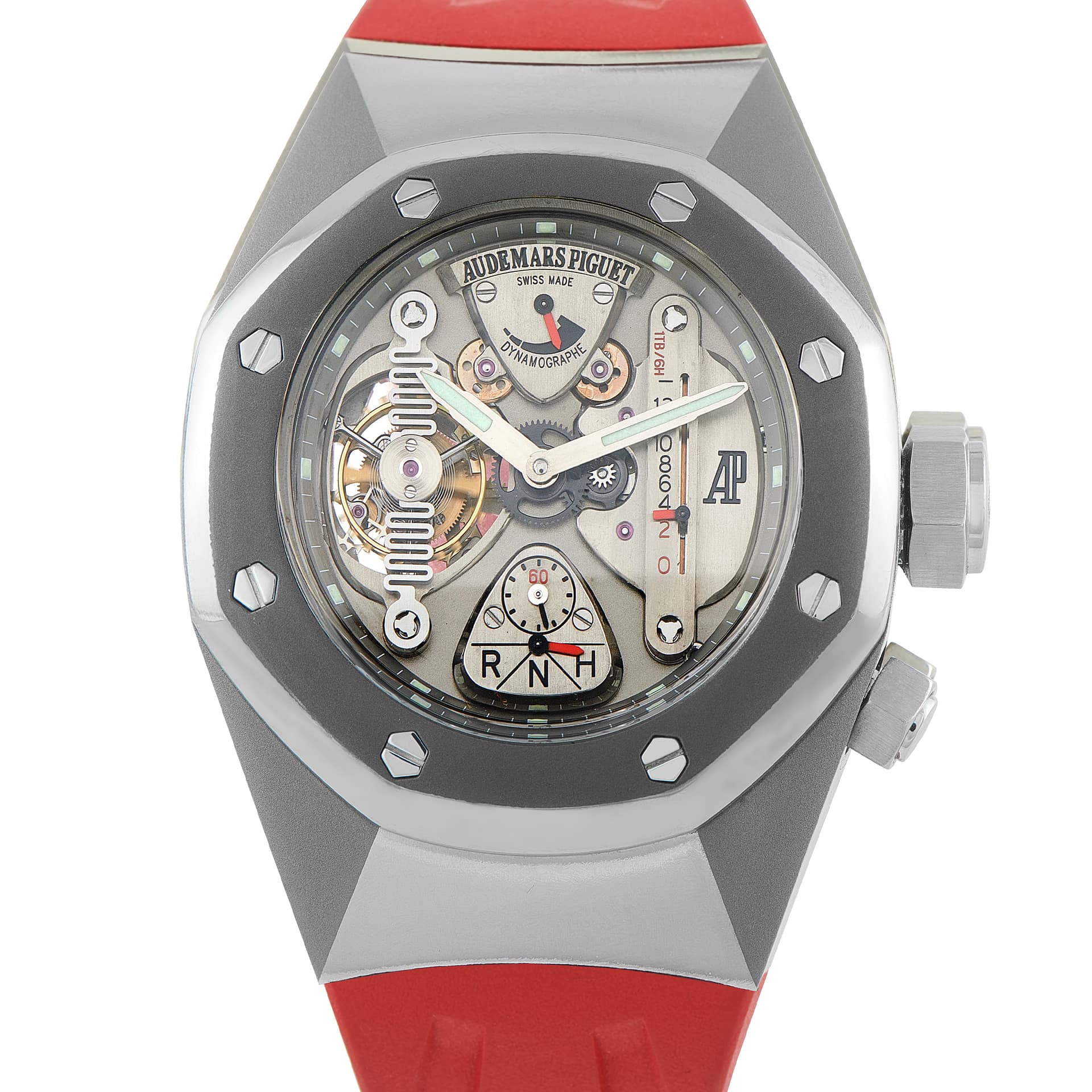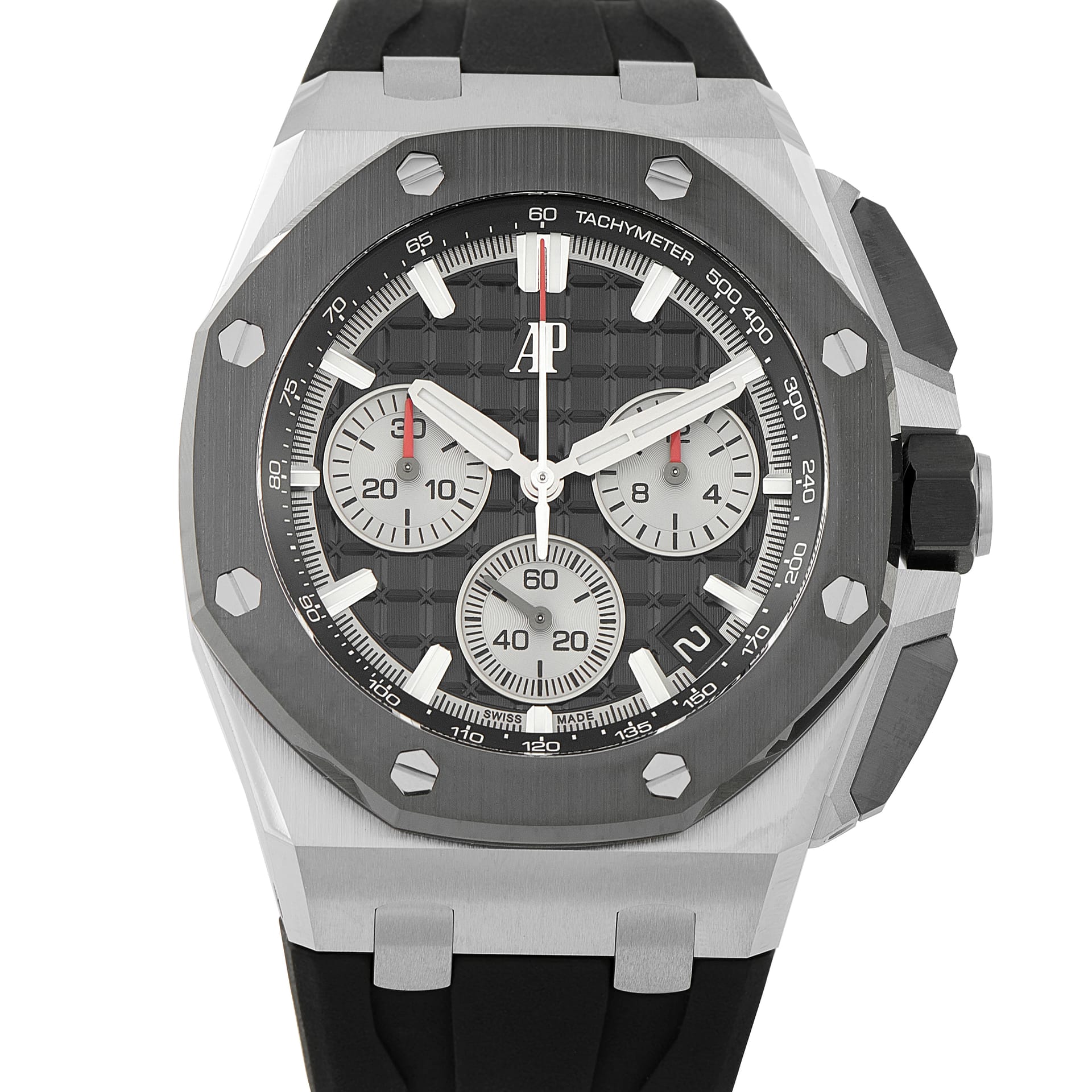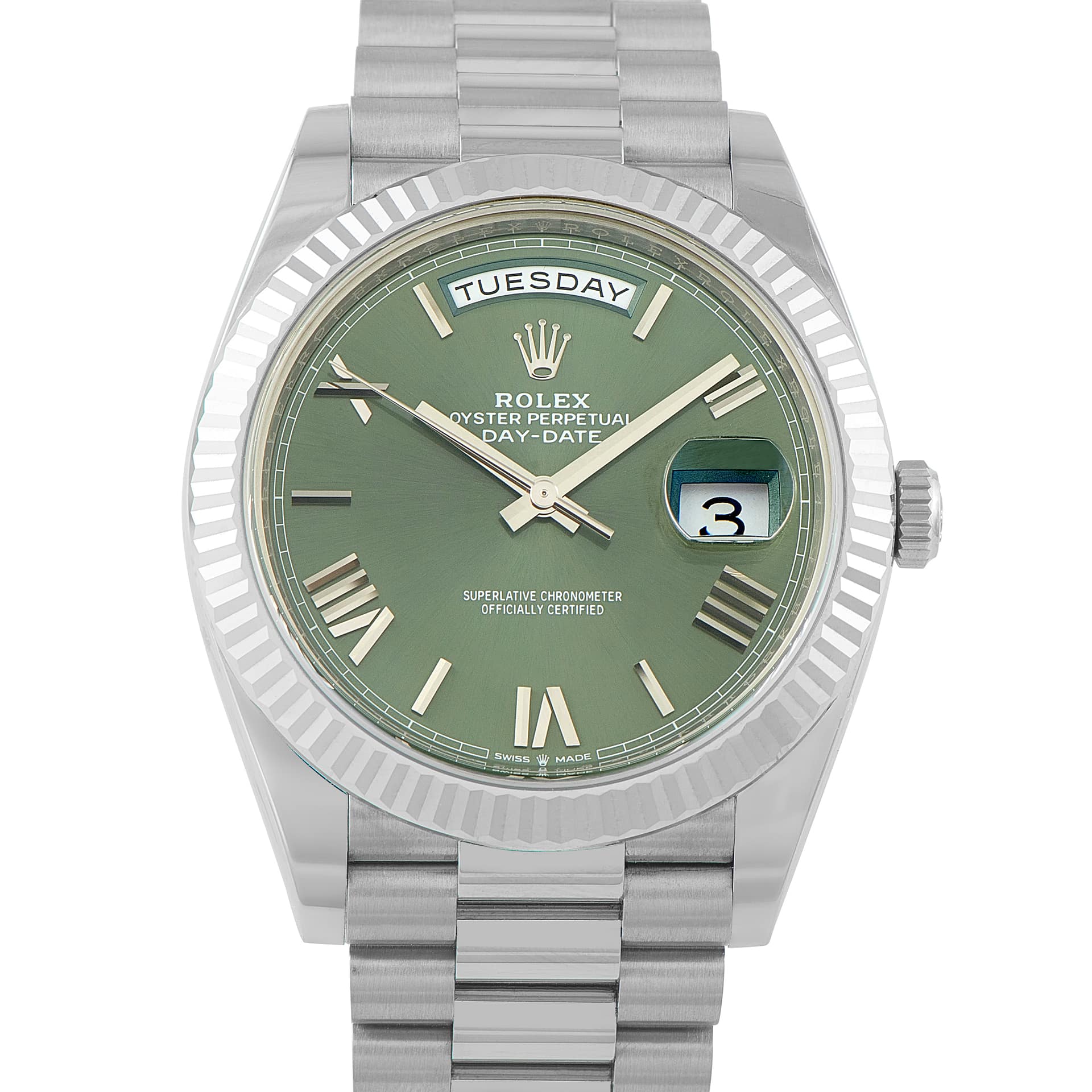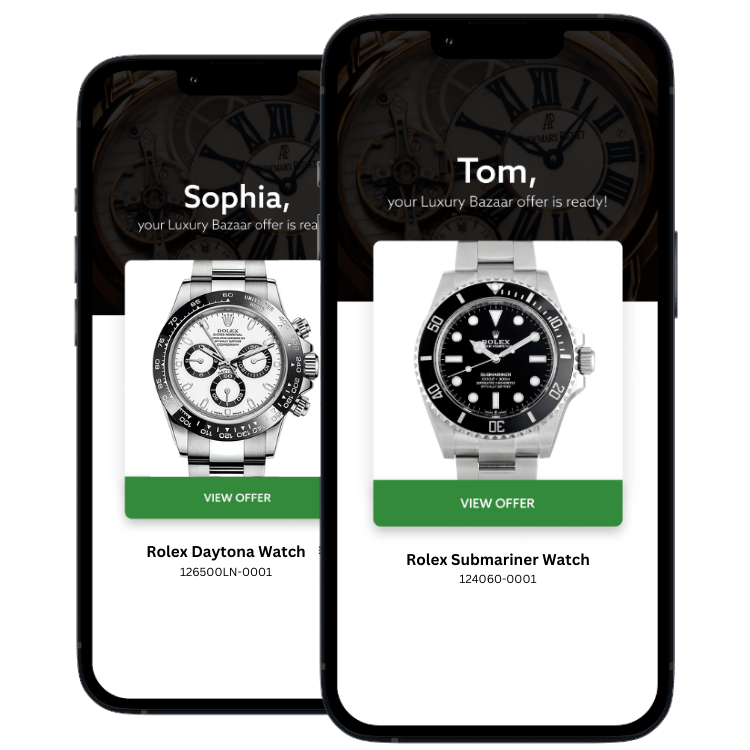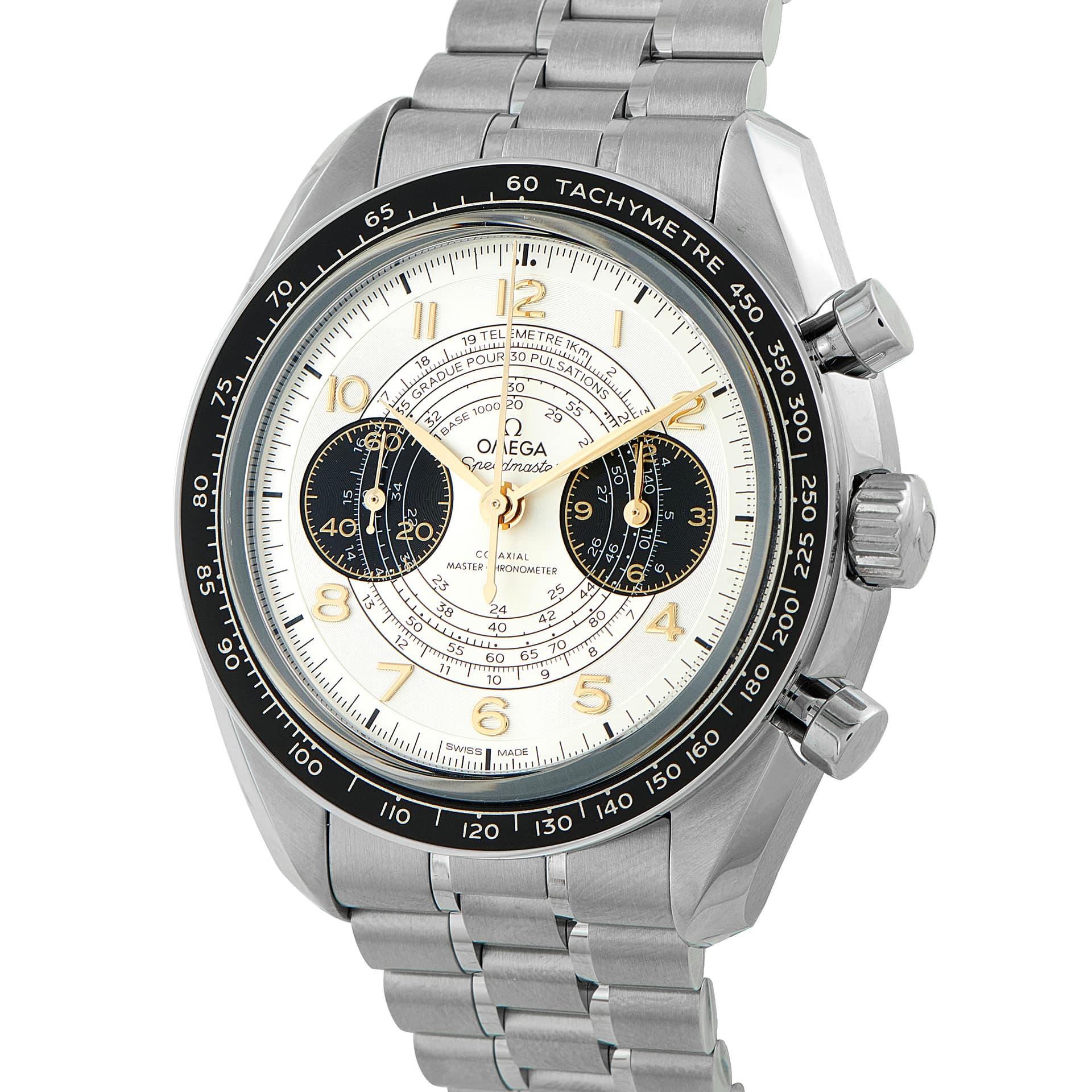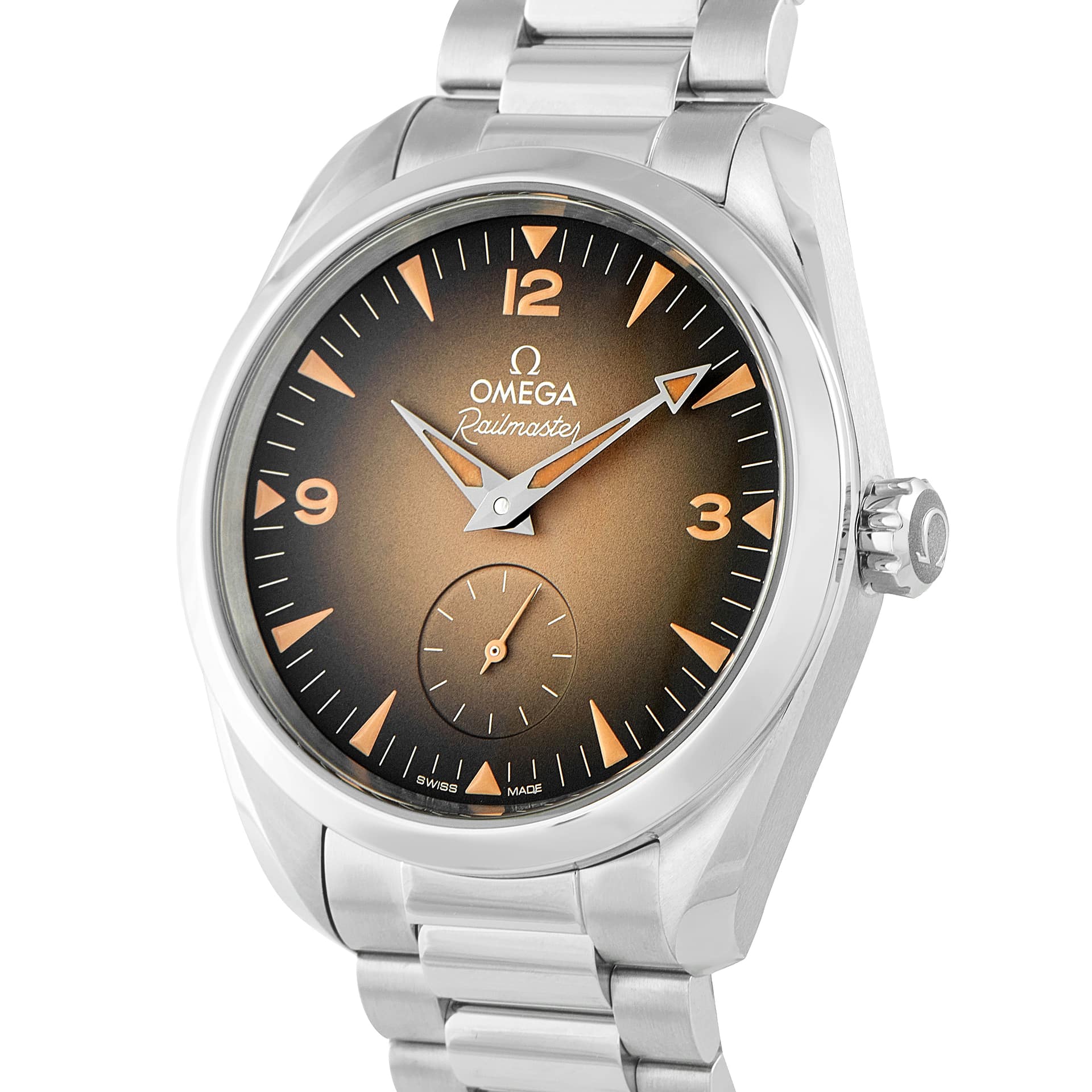Originally founded by Louis Brandt in 1848 in La Chaux-de-Fonds, Switzerland, the company eventually changed its name from La Generale Watch Co. to Omega at the dawn of the 20th Century. The brand has been behind a number of watchmaking innovations including pioneering tourbillon and minute-repeating wristwatches.
Today, however, Omega is best known for manufacturing top-tier sports watches and dress watches for men and women. Its collection is home to plenty of famous watch models including the Speedmaster chronograph (which was the watch chosen to go to the Moon) and the Seamaster Diver (which is James Bond’s watch of choice). There is also the Planet Ocean saturation diving watch, the sporty yet elegant Aqua Terra, and the classic Constellation, not to mention all the special edition Olympic watches made in honor of Omega’s role as the official timekeeper of the Games. In short, Omega offers a vast assortment of watches in a variety of sizes, materials, styles, and movements that cater to a wide audience.
Read on for more about how Omega continues to be one of the most successful Swiss luxury watch brands in the business.
Jump to a section:
- Omega History
- Omega Watch Manufacturing
- Grey Market and Authorized Dealers
- Notable Models
- Notable Patrons and Owners
- Sponsorships & Collaborations
- Omega Q&A
Omega History
One of the most influential Swiss watchmakers in the luxury watch landscape, Omega was founded in 1848 in Switzerland by Louis Brandt as “La Generale Watch Company”. The company was a typical etablisseur, assembling good-quality pocket watches from parts supplied by local workshops, and distributing the finished watches throughout Europe.
In 1894, his sons, Louis-Paul and César, revolutionized the business by introducing a 19-ligne caliber that applied the modern theory of interchangeable parts, which was the main driver for large-scale production. They called this revolutionary caliber OMEGA, which was also adopted as the company’s official name in 1903.
1903 was the year when the two brothers died, leaving the company–which grew to become one of the largest in Switzerland, with over 800 workers–in the hands of their sons, the oldest of them, Paul-Emile, was only 24. But he was exceptionally gifted. He managed to steer the company in the difficult years of the economic crisis during the First World War by finding divealliances and partnerships to consolidate. Omega joined Tissot in 1925 and created the Société Suisse pour l’Industrie Horlogère (SSIH) group in 1930.
During the quartz crisis, SSIH joined forces with another Swiss group, ASUAG, creating ASUAG-SSIH, which was eventually bought by a group of private investors and renamed SMH. This would eventually become the Swatch Group, Switzerland’s largest watch conglomerate.
Below is a timeline of when some of Omega’s most famous watches were introduced:
- 1948: Seamaster
- 1952: Constellation
- 1955: Ladymatic
- 1957: Professional Series: Speedmaster, Seamaster 300, Railmaster
- 1967: De Ville (released as a separate collection, outside the Seamaster line)
- 1985: Speedmaster Moonphase
- 1993: Seamaster Diver 300M
- 1996: Speedmaster Racing
- 2002: Omega Seamaster Aqua Terra
- 2005: Planet Ocean
- 2010: Return of the Ladymatic
- 2012: Speedmaster FOIS
- 2013: Speedmaster Dark Side of the Moon
- 2013: Speedmaster ‘57
- 2017: Speedmaster 38
- 2022: Planet Ocean Ultra Deep
Omega Watch Manufacturing
Omega has grown to become one of the leading names in Swiss watchmaking thanks in large part to its focus on research and development, high-tech manufacturing, and in-house movement production.
Notable inventions and patents
Omega is responsible for some notable inventions in horology. Some of these key achievements include:
- 1885: Introduces the company’s first serially produced caliber called the Labrador
- 1892: Launches the world’s first minute repeater wristwatch
- 1894: Releases the revolutionary 19-linge caliber called Omega, which would eventually become the company’s name. The serial-produced precise movement included easy-to-replace components making it simple to service by any watchmaker
- 1900: Wins first prize at the Universal Exposition in Paris
- 1931: Sets six precision records at the Geneva Observatory trials
- 1932: Becomes the official timekeeper at the Olympic Games in Los Angeles
- 1932: Introduces the Marine, the world’s first commercially available diving watch
- 1940: Becomes the largest supplier of watches for the British Armed Forces during WWII
- 1947: Creates one of the world’s first tourbillon wristwatch movements
- 1965: NASA qualifies the Speedmaster for all manned space flights and Extravehicular Activity (EVA)
- 1970: Awarded he SIlver Snoopy Award by NASA
- 1974: Launches the Megaquartz movement, which was certified as a “marine chronometer” and recognized as the most accurate wristwatch ever
- 1999: Omega started to release watches based on the co-axial escapement created by George Daniels, one of the most notable horological inventions of the century
- 2008: Introduces the antimagnetic Si14 balance spring
- 2013: Introduces an Aqua Terra watch resistant to magnetism of more than 15,000 gauss
- 2015: Master Chronometer Certification
- 2019: Introduces the Aqua Terra Ultra Light, an exceedingly lightweight mechanical sports watch featuring a movement made in ceramized titanium
- 2019: Omega strapped a Ultra-Deep experimental watch to Victor Vescovo’s submarine Limiting Factor for a record-setting dive to 10,925 meters
Production
Following 12 years of planning and development, Omega inaugurated its newest mechanical watch assembly facility in 2017. Spanning five floors and designed by award-winning Japanese architect Shigeru Ban, the facility is home to, among other things, Omega’s technical and quality control processes including the METAS testing for Master Chronometer certification.
Omega introduced the Master Chronometer certification in 2015, which ushered in a new quality standard for the brand’s mechanical movements. Approved by the Swiss Federal Institute of Metrology (METAS), Omega Master Chronometer movements are subjected to a battery of tests over a lengthy period of time to ensure peak precision, accuracy, water resistance, and anti-magnetism.
It’s estimated that Omega produces around half a million watches a year.
Grey Market and Authorized Dealers
Authorized Dealers
Omega relies on a large network of authorized dealers around the globe to sell its watches, as well as corporate-run boutiques and online e-commerce shops for select markets. Omega has a large presence in the U.S. with more than 160 retailers and over 30 boutiques.
Authorized retailers and boutiques are expected to follow the company’s official price list when selling watches, which is generally updated every year or so. It’s rare that buyers will receive a discount on MSRP when shopping at authorized channels.
Grey Market Prices
Thanks to the popularity of Omega watches, grey market dealers will often have them in stock. One of the biggest benefits of buying an Omega watch from the grey market is that they are frequently discounted. What’s more, grey market dealers are often able to source harder-to-find models; however, these will not be discounted and buyers will have to pay a premium to buy them.
Notable Models
Omega has created an endless variety of watches over the years, but it is best known for some lines that have captured the heart of its public.
Omega Speedmaster
The Speedmaster is possibly the most iconic line of watches from Omega. It was introduced in 1957 as a sports and racing chronograph and used the manual-winding 321 movement. This movement, which became legendary, was designed by Albert Piguet for Lemania in 1946.

Omega Speedmaster Characteristics
| Type | Chronograph Watch |
| Material | Steel, Titanium, Ceramic, Gold, Platinum, Diamonds |
| Functions | Chronograph, Moonphase, Chiming, Multi-Function (Analog-Digital) |
| Price | Retail prices range from $4,750 to $81,000 |
The use of chronographs was important not just to measure time but also to calculate variables like fuel consumption, trajectories, and so on. These capabilities were most important in fields like the nascent space industry. So, NASA issued a bid to several makers to provide a chronograph that could withstand very stringent qualifications, and the Speedmaster was chosen in 1965 as the official watch for the needs of the space agency.
Today there is a huge variety of Speedmaster models, from racing versions to space editions to vintage-inspired pieces. The best-known Omega watch is the Speedmaster Professional, and its name is indissolubly linked with space exploration. During the Apollo 11 mission, the Omega Speedmaster became the first watch to journey to the Moon alongside Neil Armstrong, Buzz Aldrin, and Michael Collins. Since then, the Speedmaster Professional has been called the “Moonwatch.” In 2019, a special version of the Speedmaster Moonwatch fitted with the legendary Calibre 321 was released to celebrate the 50th anniversary of the mission.
During the ill-fated Apollo 13 mission, the Speedmaster was used to accurately time the 14-second engine burst that saved the mission – and the life of the astronauts. As a result, Omega was issued NASA’s Silver Snoopy Award in 1970 and the Speedmaster Snoopy watches are some of the most elusive and coveted of the entire collection.
Omega Seamaster
Another important watch for the company is the Seamaster, worn by none other than the most famous spy in the world, James Bond. Seamaster is the name of Omega’s dive watch lineup, and it has been the official watch of James Bond since GoldenEye (1995), appearing on the wrists of actors Pierce Brosnan and Daniel Craig.

Omega Seamaster Characteristics
| Type | Sports Watch |
| Material | Steel, Titanium, Tantalum, Ceramic, Gold, Platinum, Diamonds |
| Functions | Diving, Chronograph, GMT, Worldtimer, Annual Calendar |
| Price | Retail prices range from $2,750 – $200,000+ |
Omega was among the first companies to create a truly water-resistant watch: the square-shaped Marine, dating back to 1932.
The origins of the Seamaster date back to 1948 when it was designed as an elegant water-resistant watch, largely based on the military watches Omega supplied to the Allied Forces during WWII. In 1957, Omega introduced the Seamaster 300 as the company’s first purpose-built diving watch and the Seamaster collection continues to offer a wide assortment of dive watches today including the Seamaster 300, Diver 300M, Planet Ocean, and Ploprof. In addition to divers, the Seamaster line is also home to other water-resistant sports watches such as the Aqua Terra everyday watch, the Railmaster antimagnetic watch, and the unconventional Bullhead chronograph.
In 2019, Omega developed a prototype deep-diving watch called the Ultra Deep to accompany The Five Deeps Expedition, the world’s first manned expedition to the deepest point in each of the five oceans. In 2022, Omega announced the commercial-ready versions of these watches in the Planet Ocean Ultra Deep collection where each watch is water resistant to 6,000 meters.
Omega Constellation
Omega introduced the Constellation watch in 1952, named after the eight stars above an observatory depicted on its crest. The eight stars denote the eight precision tests Omega won at various observatory timing trails and the Constellation became known as one of the most accurate and precise Swiss watches available. The Omega Constellation has evolved in modern times, with versions in stainless steel, precious metals, and gems, both for men and women.
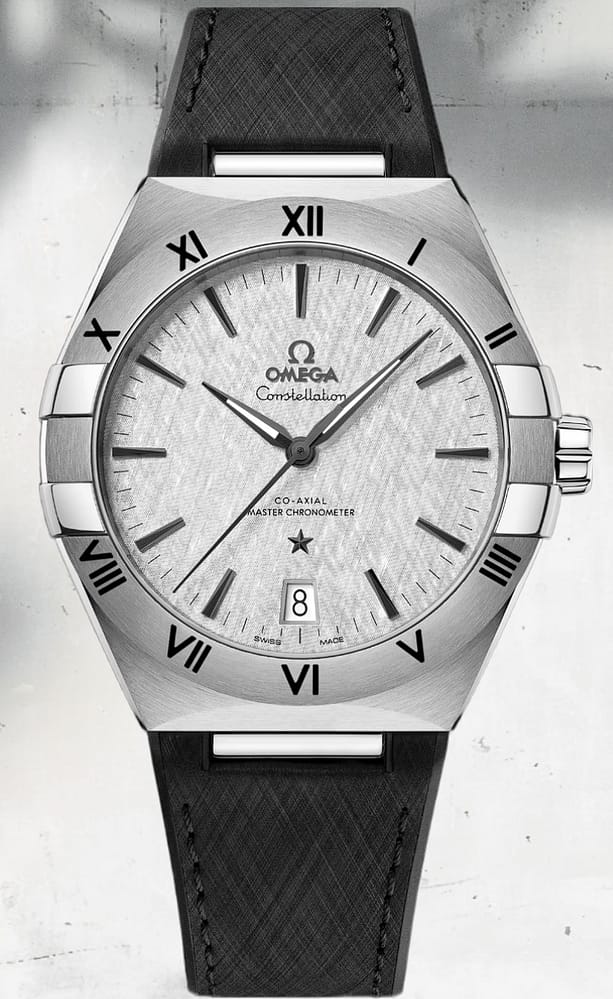
Omega Constellation Characteristics
| Type | Dress Watch |
| Material | Steel, Gold, Platinum, Diamonds |
| Functions | Time-Only, Calendar, Annual Calendar, |
| Price | Retail prices range from $2,750 to $130,000 |
The Constellation underwent several notable updates throughout its long history. For instance, in 1959, Gerald Genta (the legendary designer behind iconic watches such as the Nautilus and Royal Oak) refreshed the Constellation collection and included iterations such as the C-Case Constellation. In 1982, the Constellation Manhattan made its debut as an ultra-thin and modern watch fitted with a quartz movement. The watch’s four “claws” (also known as “griffes”), Roman numerals on the bezel, and integrated bracelet that were present on the original Manhattan remain important design characteristics of today’s Constellation watches.
Within the Constellation line is also the Omega Globemaster watch, which are vintage-inspired dress watches with fluted bezels and classically designed dials.
The Constellation collection offers an endless variety of sizes and materials, from stainless steel to yellow, white, or red gold, both for men and ladies. Bimetal models are also available, and gem-studded versions are not uncommon.
Omega De Ville
The De Ville is another very popular line of the watchmaker Omega. Introduced in the 1960s, it is dressier than the Constellation and oftentimes, more complicated too. For instance, there are De Ville watches that feature skeletonized movements and tourbillons.

Omega De Ville Characteristics
| Type | Dress Watch |
| Material | Steel, Gold, Platinum, Diamonds |
| Functions | Time-Only, Calendar, Annual Calendar, Tourbillon, |
| Price | Retail prices range from $2,550 to $725,000 |
You will find men’s and ladies’ watches powered by quartz and mechanical calibers, with some the high-end versions featuring tourbillons The cases are made of stainless steel, gold alloy, or platinum, sometimes with gems. The collection features also many ladies’ watches in precious metal and gems, so it is perfect as a jewelry watch as well.
Notable Patrons and Owners
From elite athletes to movie stars and other notable personalities, Omega relies on a wide roster of brand ambassadors to promote its watches. Some of the brand’s most famous ambassadors who regularly step out with an Omega watch on their wrist include:
- George Clooney
- Nicole Kidman
- Cindy Crawford
- Daniel Craig
- Rory McIlroy
- Buzz Aldrin
- Alessandra Ambrosio
- Kaia Gerber
- Eddie Redmayne
- Michael Phelps
- Zoë Kravitz

However, aside from official spokespeople, Omega watches are also a favorite among celebrities and watch enthusiasts in general. For instance, Tom Hanks wears an Omega Speedmaster while Prince William is never without his Omega Seamaster. Ryan Reynolds owns a Speedmaster “Dark Side of the Moon” and musician and notable watch collector, Ed Sheeran was spotted with a limited edition James Bond Spectre Seamaster 300 on his wrist.
Sponsorships & Collaborations
Omega is an active sponsor in the world of sports, cinema, and space exploration. For instance, Omega has been the official timekeeper of the Olympic Games since 1932. What’s more, Omega also serves as the official timekeeper for other global sporting events in golf, track and field, swimming, and sailing, just to name a few.
One of the most well-known, and beloved, Omega collaborations is with the James Bond movie franchise. Not only do we get to see a panoply of Omega watches on screen but the brand also releases a host of special edition 007 watches with each James Bond movie release.
Finally, one of the newest and most notable Omega collaborations in recent history is “Speedy Tuesday” with online watch magazine Fratello Watches, which coined the popular #speedytuesday tag on social media. The two limited edition Speedy Tuesday Omega watches are squarely aimed at the Omega enthusiast community.
Omega Q&A
How much are Omega watches?
Depending on the specific model, the price of Omega watches can range from as low as $2,500 to as high as hundreds of thousands of dollars. Generally speaking, the least expensive Omega watches are smaller ladies’ models powered by quartz movement. For popular mechanical men’s Omega watches in steel such as the Speedmaster Moonwatch, Seamaster Diver 300M, Planet Ocean, or Aqua Terra, expect to pay around $5,000 to $10,000. Prices for gold versions of these men’s Omega watches typically range from $8,000 to $30,000.
Do Omega watches hold their value?
Most Omega watches tend to depreciate when purchased at full retail prices. However, some Omega watches have become quite collectible, therefore hold their value well or in some cases, even exceed retail costs. For example, the Speedmaster Snoopy watches are some of the most collectible modern Omega watches in the market, valued at around 2.5 times its retail price. Another investment-worthy Omega watch that currently trades about twice its original retail value is the limited edition Speedmaster Speedy Tuesday “Ultraman” watch, released in 2018 with a sticker price of $7,000. It sells for far more than that today, while typical Omega Speedmaster prices are closer to $6,000.
Where are Omega watches made?
Omega watches are made in Switzerland. The Omega headquarters have been based in Bienne, Switzerland since 1880, and the company makes a good portion of its watch components in-house. Omega also sources some parts from its sister company ETA, which is also part of the Swatch Group. In 2017, Omega opened its newest production facility in Bienne to combine all of its assembly and testing processes under one roof.
Are Omega watches good?
Omega makes excellent Swiss-made luxury watches and the company has consistently been ranked as one top-selling Swiss watchmakers for decades. Omega watches are beloved for their superb designs, fine materials, top-notch performance, and outstanding durability. What’s more, Omega Master Chronometer mechanical timepieces are subjected to eight tests over 10 days to ensure superior precision and magnetic resistance.
Excellent entry-level Omega watches can be found for $4,000, while their rarest exotic pieces can reach into six figures. From Speedmaster Moonwatches to James Bond Seamasters and Planet Ocean deep diving watches, Omega makes some of the best and most recognized premium watches in the market.
To see how Omega stacks up against some of their competitors, see our guides to Tudor vs. Omega and Rolex vs. Omega.
Where to buy Omega watches?
Omega watches are sold via a vast network of authorized dealers around the world. Aside from authorized retailers, Omega watches can also be bought on the secondary market from grey market dealers, pre-owned watch retailers, and private sellers. However, if you’re purchasing an Omega watch outside of the authorized network, make sure that you only do business with a reputable reseller to mitigate any risks of counterfeit or questionable goods.

